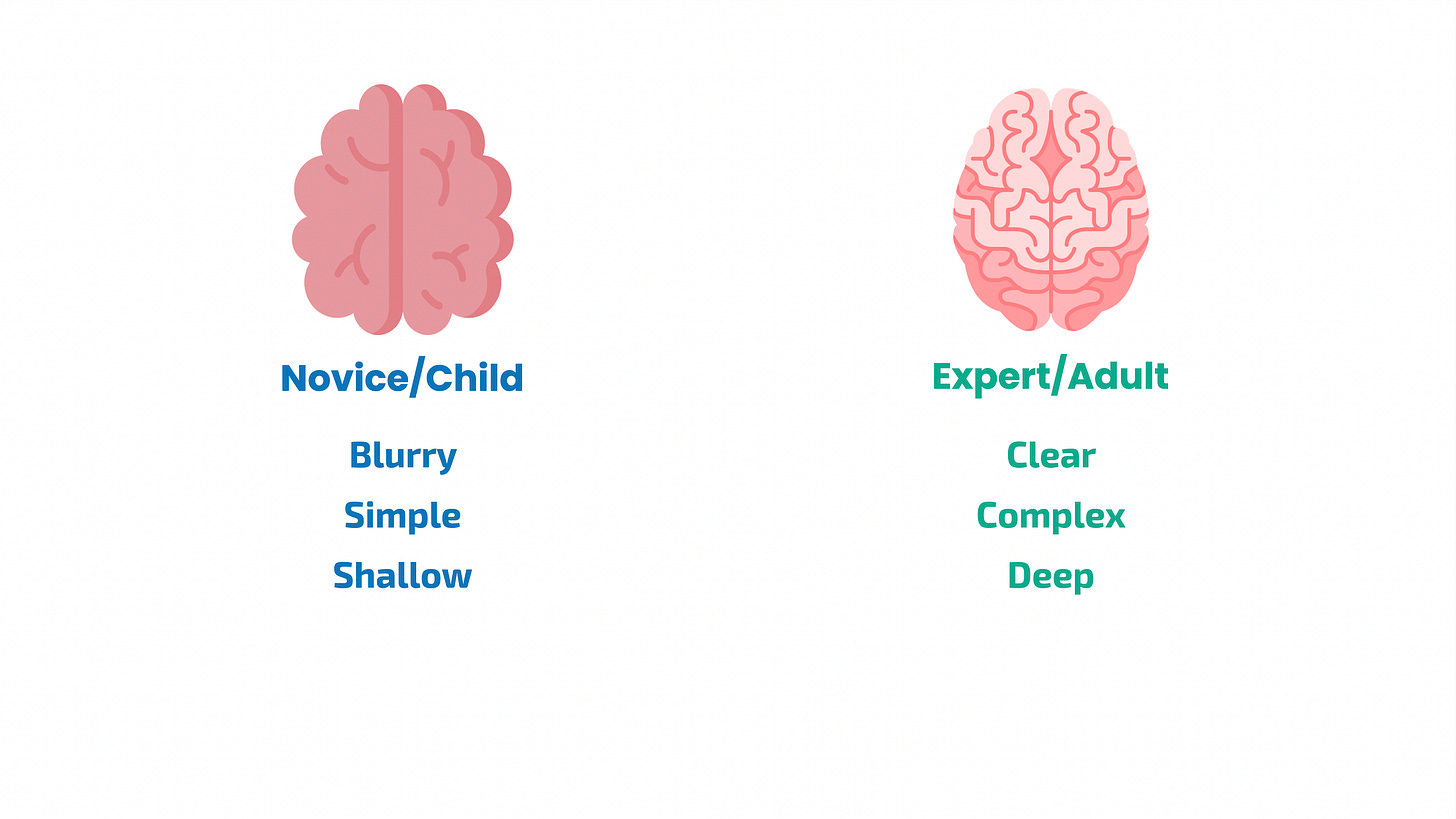The Learning Continuum
Remember: all learning (formal or informal, school or cultural, digital or manual) moves in a continuum of Novice level to Expert level.
One starts with zero or very little knowledge and then progresses towards gaining enough relevant knowledge and skills in a certain subject or discipline.
Let me call that the “learning continuum”, for the lack of a better term or metaphor.
So, for a teacher, one of the most important, near-precision info has to be the understanding of where the students are at on that continuum.
That is, the level of their prior knowledge which is essential to that subject matter.
Relevant and congruent prior knowledge will help in further learning. Irrelevant and incongruent prior knowledge (usually contrasting folk knowledge) will hinder further learning.
It is what it is.
(So, if you as a teacher is unaware of your students’ prior knowledge and where they are in the learning continuum, you are basically hoping that learning will happen. Sometimes, because of wild chance, your students might learn. Most of the times however you will be shooting in the dark, wasting your students’ time and your own time too.)
I digressed, but let me come back to the point of this post.
BSS to CCD
Teachers must have this basic understanding of the nature of the prior knowledge most novices have.
Initially, all novices have:
Blurry, Simple, and Shallow understanding of the subject/skill they are going to learn.
What does it mean?
Here’s an example of a novice (or a kid) about his or her understanding of fruit.
Blurry: Only partially formed, and not clearly distinct from similar concepts. Apple (🍎) is a type of fruit. Orange (🍊) is also a type of fruit.
Simple: Basic in structure, with superficial connections to related concepts. You get Apples and Oranges from the supermarket near your house.
Shallow: Tied to a few/particular contexts and not easily applied to different situations. Apples or Oranges are good for health.
When the novice (or that kid) moves forward in the learning continuum, his/her understanding of fruit also becomes CLEAR, COMPLEX, and DEEP.
Otherwise, we can say for sure, learning did not happen. May be something else, but not the Intended Learning.

Novice to Expert
So, how do you make sure that the students are moving forward in the learning continuum?
Here’s the most “natural” framework. You can fit in all types of learning into this. In fact, it’s undebatable.
In the novice stage: teach them through Explicit Instruction, following the model of Gradual Release of Responsibility. With a lot of opportunity to practice, feedback, and refinement.
When the students have enough subject/content knowledge and are near the expert stage: teach them through Inquiry or Discovery method. With a lot of opportunity to explore and experiment on their own.
This is the foundation of teacher-led student-centered teaching with “learning” in the focus. I like to call it: the learning-centered teaching.
Yes, you teach the students. But you teach them the content. You teach so that the students learn and master the intended knowledge and skill.
P.S.





